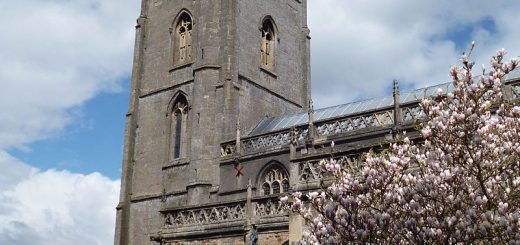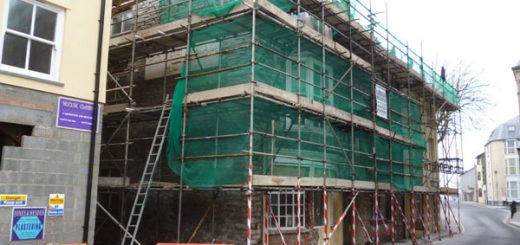Spynie Palace
Spynie Palace was the seat of the bishops of Moray for over 500 years; the atmospheric ruins now a shell of its former glory. The Palace – like many old historical buildings – has its share of traditions and ghost stories.
 The founding of the palace dates back to 1200AD, when Bishop Richard relocated the cathedral of Moray to Spynie, then lapped by the waters Spynie Loch, which has since retreated to its present position. The sea loch provided a safe anchorage and aided the defence of the palace in those turbulent times. The cathedral was relocated to Elgin in 1224, but Spynie remained the fortified residence of the Bishops of Moray.
The founding of the palace dates back to 1200AD, when Bishop Richard relocated the cathedral of Moray to Spynie, then lapped by the waters Spynie Loch, which has since retreated to its present position. The sea loch provided a safe anchorage and aided the defence of the palace in those turbulent times. The cathedral was relocated to Elgin in 1224, but Spynie remained the fortified residence of the Bishops of Moray.
In 1390 the palace and the village was burned to the ground along with Elgin Cathedral by Alexander Stewart, The Wolf of Badenoch (see also Ruthven Barracks ). The palace was rebuilt by Bishop Innes, and part of the stone structure still survives from this time. The most impressive part of the Palace is the six-story tower, named David’s Tower after Bishop David Stewart who oversaw its construction. The tower has impressively thick walls, and is one of the largest towers of this type in Scotland.
 The palace had a number of important visitors over the years, James the IV stayed here in 1493 and 1505, Mary Queen of Scots in 1562 and James VI in 1589. The palace passed into the hands of Protestant Bishops, after the sweeping changes of the reformation led to the lands being sold to the Lindsay family.
The palace had a number of important visitors over the years, James the IV stayed here in 1493 and 1505, Mary Queen of Scots in 1562 and James VI in 1589. The palace passed into the hands of Protestant Bishops, after the sweeping changes of the reformation led to the lands being sold to the Lindsay family.
The palace was besieged by General Munro in 1640, the General forcing Bishop Guthrie to surrender it to his forces. This really marked an end to Spynie as a seat of power, as the palace only survived until 1688 when the last Bishop was removed from office. From then on the palace fell into disrepair, with much of the stone work being robbed out.
Traditions:
 There are a number of traditions attached to the Palace; one is that of the ubiquitous phantom piper, a folklore motif common to many ancient castles. The other ghost is said to be that of a lion, although the root of this story is far from obvious. Some people contend that a lion was kept here as an exotic pet, which still wanders the ruins in spirit form. There has even been talk of lion’s footprints being found within the ruins.
There are a number of traditions attached to the Palace; one is that of the ubiquitous phantom piper, a folklore motif common to many ancient castles. The other ghost is said to be that of a lion, although the root of this story is far from obvious. Some people contend that a lion was kept here as an exotic pet, which still wanders the ruins in spirit form. There has even been talk of lion’s footprints being found within the ruins.
As with many seats – of what some locals may have thought of as oppressive – power, grim folklore grew up about the dark deeds of certain resident bishops. One was said to be a practitioner of Black Magic, who used his powers to summon evil spirits and Demons within the cyclopean walls of David’s Tower. Traditionally the tower would be the focus of the witches Sabbath on the night of Halloween, when the tower would light up like fire, and the air would be filled with the sound of demonic merriment.
 The site is certainly atmospheric and well worth visit for those searching for echoes of the past. The Palace is now in the care of Historic Scotland, who have done a great deal of restoration work at the site.
The site is certainly atmospheric and well worth visit for those searching for echoes of the past. The Palace is now in the care of Historic Scotland, who have done a great deal of restoration work at the site.
Directions: Off the A941, North of Elgin.























Re: Spynie Palace
The following experience was e-mailed in by one of our readers:
One beautiful sunny summers morning about 9.00 am, I tried to enter Spynie Palace as a visitor. Although the door was open I was ‘not allowed’ to go in and could not ‘break through’ an invisible barrier. I ask the attendant to help me and as she was serving a new visitor I waited. Thinking this was silly I tried again and on forcing my way through (another visitor had just entered) I came upon a spirit man of such evil and aggression I was shocked. He was dressed in a plaid tunic, with shoulder length wavy hair, moustache and sharp goatee beard. His eyes were slitty and bright blue, his face thin and he had pantaloons on. He ranted and raved and I ‘told him’ I was ‘looking at the architecture’…..I existed the palace quickly just at the moment the attendant came to look for me. She expressed concern at my appearance, and I felt I had to tell her what I had encountered. She immediately said, ‘oh you have just met the Wolf of Badenoch’….I asked her what was he doing here as I had expected an ecclesiastical atmosphere. She said Alexander Stewart alias the ‘wolf’ had actually lived at the palace for 3 years! Other experiences there were of three excitable young horsemen leaving on the main drive, trotting, laughing and cantering on their small ponies. I felt these were the bishop’s messengers and there were three of them so that the message got through if anything should happen like an attack. In other locations, Eilean Donan for example on walking around the fortified house I sensed a woman in red velvet sitting at a desk, writing to a man overseas, the image I got was of naval vessels of old world kind coming up the loch. Years later my son who wasn’t with me at the time, told me that Mary Queen of Scots’ had been living at the castle and had written secretly to Phillip of Spain to come for her. Its very exciting getting information like this and I never research before I go anywhere, the reward is finding out later. This is just a small example of the many psychic cameos I am ‘shown’ when I go to historic sites. This information doesn’t all come at once, but is revealed gradually during several visits. I would love to share this with others and the fun part is researching afterwards. I have yet to find verification of the three horsemen at Spynie Palace but must admit I haven’t tried very hard yet. Once whilst waiting to pick up my son outside Elgin Academy I suddenly had a ‘message’ that ‘the bishops were angry with the lawmen because they were not doing the bishops bidding’…what this was I don’t know but I was parked between the cathedral and an area know as Sherriffmill……